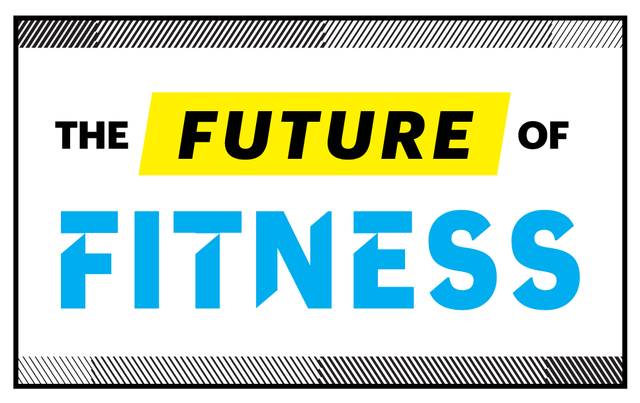I’ve got a needle in my arm, and I’m craving chocolate cake.
The cake in question is my mom’s, flourless and rich, on a plate she’s just handed me at brunch. The needle—more like a filament, actually—is attached to a sensor called a continuous glucose monitor, or CGM, which measures my blood-glucose level in real time.
I know two things: One, this cake is delicious. Two, it will probably jack my glucose reading sky-high, which has all sorts of possible unwanted consequences, ranging from me falling asleep on the couch in an hour to, over the long term, premature cardiovascular disease. But I’ve already had pancakes with syrup and a bagel with smoked salmon this morning, so what the hell. I eat the cake and cut a second slice.
A little later, I check an app called Levels, which receives data from my CGM and puts it through a proprietary algorithm to gauge my metabolic health—one aspect of this being how quickly and efficiently my body processes sugar and other carbohydrates. Every meal is assigned a score based on how much my glucose rises and how long it stays high. On the app’s ten-point scale, Mom’s carb-blowout brunch rates a zero. Not good.
It’s my first week of beta testing Levels’ CGM-based metabolic-health program, and so far it’s been, uh, interesting. A CGM is normally available by prescription to people who have been diagnosed with either type 1 or type 2 diabetes. These patients rely on CGM readings to gauge when they need to inject insulin (the hormone that helps bring glucose levels down when they’re too high) and when they need to eat to prevent hypoglycemia (low blood sugar), a potentially life-threatening situation.
Levels and a few other start-ups have begun to make CGMs available to non-diabetics like me who are interested in understanding how our metabolism responds to what we eat and how that in turn affects our sleep, energy level, sex life, and athletic performance. The idea is that by keeping on top of our blood-glucose level, we might change our behavior, improve our quality of life, and lower our risk of chronic disease.
I test-drove two of the new apps: Levels, which is oriented toward diet and optimizing metabolism, and Supersapiens, which is aimed at athletes. After at least a month of using both, it’s safe to say that brunch has been all but ruined for me. But I have a new appreciation for the importance of controlling my glucose level—and how much better it makes me feel, both when exercising and in my life in general.
Levels was founded by a former SpaceX engineer named Josh Clemente, who found himself, at the ripe old age of 28, hitting a wall. Many afternoons, his energy level would crater, often dragging his mood down, too. (Sound familiar?) The part-time CrossFit trainer looked fit, but inside, he says, “I felt like I had some sort of fatal illness.” He bought a glucose meter and began pricking his finger and testing his blood multiple times per day, keeping a spreadsheet of the results. He then got a prescription CGM from a doctor friend, and he was astonished by what it revealed. “It basically told me I fit the criteria for prediabetes,” he says.
Nearly 30 million Americans have been diagnosed with type 2 diabetes, defined as the body’s inability to manage blood-sugar levels. But another 88 million have prediabetes, meaning they have higher-than-normal blood sugar—and the vast majority are not aware of it. More alarming, a 2019 study from the University of North Carolina at Chapel Hill estimated that only 12 percent of American adults are metabolically healthy, defined as having optimal (without medication) triglycerides, HDL cholesterol, blood pressure, blood glucose, and waist circumference.
I was sort of in the same boat. My last fasting glucose test, a few weeks before I tried a CGM, had come out a reassuring 87 mg/dL. (At or below 99 mg/dL is considered to be ideal; 100 and above is cause for concern.) I’m good, I thought. A few weeks later, my Levels kit arrived, containing an Abbott FreeStyle Libre CGM that had been prescribed by a Levels doctor via telemedicine. I applied the half-dollar-sized disc to my upper arm, inserting a filament painlessly into my skin. The sensor took minute-by-minute readings, storing the data on my phone. Watching my glucose level rise and fall through the day told a different, and more alarming, story than the static reading at my doctor’s office.
The Levels app took my CGM data, coupled with my entries for meals and exercise and other notes, and computed a daily metabolic score, expressed as a percentage. This score was based on my average glucose level each day, the number and steepness of post-meal spikes, and the amount of time I spent outside the Levels-defined optimal glucose range of 70 to 110 mg/dL. (Higher blood-glucose levels can cause cellular and vascular damage; very low levels can lead to feelings of fatigue and brain fog.)
Most days, the Levels app scored my metabolic performance in the high 50s, which I assumed was pretty good until I talked to Casey Means, M.D., a Levels cofounder and its chief medical officer. “Well,” she said diplomatically, “the lowest it goes is 50, so there’s that.” Oh.
The Levels app seemed rather judgy, to be honest, but with good reason. High levels of blood glucose—and the surges of insulin that the pancreas secretes to try to dispose of all that energy (or store it as fat)—are strongly correlated with chronic disease, says Peter Attia, M.D., a physician whose practice focuses on longevity. High glucose can damage blood vessels and arteries, leading to kidney disease, erectile dysfunction, blindness, and even dementia. High levels of insulin are strongly linked to obesity, and the hormone has anabolic effects that could fuel certain cancers. “It’s almost assuredly why obesity is the second-largest modifiable risk factor in cancer, after smoking,” Dr. Attia says.
The basic theory behind Levels is that by lowering our average glucose level, and especially the spikes after eating, we can reproduce and thus lower our risk of chronic disease—as well as feel better day-to-day. “Improving glucose is low-hanging fruit for improving health and well-being,” says Dr. Means. “It is the foundational unit of energy in the body. And it
is out of whack, at scale, in our country.”
In practice, weaning myself from my carb habit proved to be difficult. Many of my go-to meals—whole-milk yogurt with granola and fruit for breakfast, a burrito or an Italian sandwich for lunch, pasta or risotto for dinner—jacked up my glucose level, resulting in electronic disapproval from my phone. And certain foods triggered extreme reactions: A few bites of our kid’s pancakes got my blood glucose to 180, and a “healthy” lunch of vegetarian tacos set my all-time record of 208.
On the other hand, my CGM seemed to be okay with things like eggs and bacon in the morning, steak or grilled salmon at dinner, salads and leafy vegetables, nuts instead of chips at snack time, and pretty much anything involving avocados. I began making some modest changes to my diet and generally eating smaller portions. Levels prompts users to photograph their meals with each log entry, and that made me pay more attention to what I ate. My daily score gradually crept upward, into the 60s, 70s, even high 80s. I’ve always loved carbs and have never been a fan of any kind of labeled diet, but my CGM was carb-shaming me into eating more reasonably.
“CGM becomes a tool to change behavior,” says Dominic D’Agostino, Ph.D., an associate professor at the University of South Florida, who has experimented with different diets and foods while beta testing Levels. “I considered myself hyperaware of what food does to the body, but CGM takes that to another level. And it’s actionable.”
He adds, “I think CGM could be a powerful tool to get people’s metabolic health under control, before it becomes a problem.” It wasn’t just my own behavior that changed: My partner had initially made fun of the glucose sensor implanted in my arm and my constant checking of the Levels app. “How’s your glucose today?” she’d tease. But then one day she came home from Trader Joe’s with a bag of frozen low-carb cauliflower gnocchi. We cooked them up that night with some lamb ragù, and they were delicious—and we didn’t end up with that carb-bloated feeling we get from pasta. Even Levels approved.
At the same time, I was using another, very different CGM-based platform, Supersapiens, looking for insights into the link between glucose and athletic performance. Cofounded by Phil Southerland, a former professional cyclist and a diabetic, Supersapiens is meant to teach elite and recreational athletes what Southerland learned the hard way about the importance of managing his glucose level as an athlete.
As a young cyclist with type 1 diabetes, meaning his pancreas produces little to no insulin, Southerland saw that on days when his blood sugar was low, he would race poorly, while a more stable glucose level often translated into better performance. But there was no way to keep track of how his glucose changed during an event. When he began using a CGM about a decade ago, he saw how important tracking levels while active could be.
“My knowledge of everything that happened in my body—food, insulin, nutrition, sleep—increased exponentially in those first 20 days of using continuous glucose monitoring,” he says. His fellow athletes on Team Novo Nordisk, which he founded, began using CGM to help with their training and racing, and their results improved. “It was a phenomenal tool,” he says.
As CGM technology got better and its use spread, Southerland started looking for ways to bring this data to nondiabetic athletes, and Supersapiens—which launched in select European markets in September 2020—is the result. The app uses a new sensor made by Abbott called the Libre Sense Glucose Sport Biosensor, which is geared toward athletes (and undergoing FDA review). The main difference is that it measures a narrower range than sensors for diabetics, between 55 and 200 mg/dL.
When my sensor arrived via FedEx, I implanted it in my other arm, waited for it to warm up, and then set out for a bike ride. Every minute, the sensor sent a glucose reading to my phone, which I had mounted to my handlebar. As I headed up a long climb, I noticed something strange: My glucose number started rising when I had expected it to go down. As the climb got harder and my liver and kidneys cranked out more fuel for my muscles via a process called gluconeogenesis, the number jumped yet again, up to about 140 (similar to where I land after, say, a bowl of granola). But then two hours into the ride, the number began to plunge, sliding all the way down to 70. My energy level was tanking as well, and by the time I made it home, I was hungry enough to eat a bike tire.
Supersapiens is meant to help you prevent disasters like that; as soon as I noticed my glucose dropping steeply, I should’ve eaten something. Learning such lessons is actually the point, says Southerland: How do I feel after eating granola for breakfast versus, say, an Egg McMuffin? Should I eat Clif bars on the ride or just a banana? “It’s like becoming your own scientist,” he says. On my next ride, I carried some energy chews with me, nibbling on one whenever my glucose began to dip. I rode home strongly that day.
Exercise physiologist Asker Jeukendrup, Ph.D., a member of Supersapiens’s scientific advisory board, thinks a CGM could help not only cyclists and runners but also other athletes, such as professional golfers or auto-racing drivers, who need to maintain cognitive sharpness over long periods of time.
I spent more than a month using various CGM systems—two different Abbott sensors, for Levels and Supersapiens, and a third sensor made by a company called Dexcom, whose software is tailored for diabetics. For a while I had three CGMs implanted in my body, like some kind of lab rat. The most important rule that I learned with a CGM is that when it comes to blood sugar, there are no hard-and-fast rules. Or at least not many. On days when my glucose level jumped up and down like a kangaroo on meth, I tended to feel tired and cranky, and also often moody. On days when my number was more stable, so was my energy level. My sleep tended to be better, too. “What we’ve seen is that even in people who think they don’t have problems with diabetes or glucose control, they have massive spikes, and massive crashes, that have significant consequences on performance,” Southerland says.
One thing I did notice is that the various CGM sensors that I was wearing almost never agreed with one another. I’d consult my three apps and they would each give a different number. The Abbott systems almost always reported lower numbers than the Dexcom, by ten to 15 points. (This is because a CGM measures the fluid around cells and does not directly measure blood.)
This is not a big deal for patients with diabetes (who are more concerned with high glucose levels, above 180), but it could be critical for healthy people who are trying to avoid sliding into metabolic dysfunction. “The difference between 100 and 120 is huge for my patients,” says Dr. Attia, one of a few physicians who prescribe a CGM for their nondiabetic patients as a preventive measure. A patient whose average glucose is 120 is likely farther along the road to prediabetes or diabetes than one who hovers at 100. “Diabetes and metabolic dysfunction are on a continuum; it’s not binary,” he says.
In general, though, all of my CGM readings moved in the same basic direction. They all went up after a bagel and down after a dog walk. More interesting was the daily variation in my glucose response. For example, one morning I succumbed to a bacon-egg-and-cheese croissant at a bakery near my house. I was dreading the CGM scolding, but it was fine. My glucose did not react much at all, and Levels rated the croissant a 6/10. A few days later, however, the exact same croissant from the same bakery at the same time jacked my glucose up. Rating: 1/10.
Which brings us to the other big lesson of CGMs: Our individual metabolisms, how we handle glucose, can change from day to day. “A lot of factors are influencing your glucose levels at any point in time,” says Federico Fontana, Ph.D., an exercise physiologist and head of performance for Team Novo Nordisk. “Some individuals react with more variability in the course of the day, while others are more stable. This will depend on a lot of things, such as the amount of exercise you are doing, your kind of diet, how your insulin sensitivity changes, even the temperature or the time of the day.”
Mental stress also affects insulin response, says Dr. Means, which can cause a very different reaction to the same food on different days. She adds that our insulin sensitivity shifts over the course of the day: “We tend to be more insulin sensitive in the mornings, so I tend to front-load my carbs in the first part of the day.”
With her words in mind, I decided to take on one more glucose challenge: my mom’s flourless chocolate cake, which had done me in that Sunday morning at brunch. She’d sent home a couple slices and they had sat in the fridge. One afternoon after lunch, I helped myself to a big piece of delicious, dense, dark-chocolaty goodness.
I had been riding and hiking more lately, I’d had a good but lowish-carb lunch, and I felt like my insulin game was on point. A few CGM experiments had taught me that dark chocolate doesn’t seem to affect my glucose level nearly as much as, say, maple syrup or flour tortillas. So I ate the cake, with confidence. And it barely moved the needle.
This story appears in the March 2021 issue of Men's Health.






















